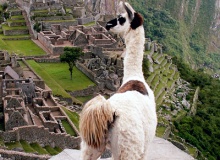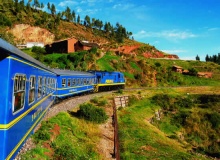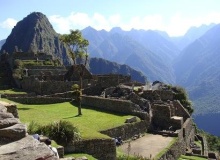Peru
Lima | Cusco | Machu Picchu
A country that leaves you breathless, unspoilt beaches, coastal desert, deep canyons and dense Amazon jungle
Lake Titicaca, which straddles Peru's border with Bolivia, is the highest navigable lake in the world—and one of the most beautiful. The Inca ruins of Machu Picchu, which would be stunning anywhere, are truly spectacular in their Andean setting, high above the Urubamba River. And Cusco, once the centre of the Inca empire and now a vibrant gateway to Inca ruins, is also high in the Andes.
Yet even at sea level, Peru can leave you breathless. With unspoiled beaches, coastal desert, deep canyons and dense Amazon jungle, its variety of natural wonders is astonishing.
Then, there are the cultural treasures. The contrast between old and new runs throughout the land: Poncho-clad indigenous peoples walk their llamas through modern cities, past Spanish cathedrals built on the foundations of ancient Inca ruins. Giant, stylized designs were etched in the earth by the Nazcz who were a great pre-Columbian civilization.
Peru is where pre-Columbian culture reached its most graceful peak. Like the Parthenon in Greece or the Pyramids of Egypt, the Inca and pre-Inca ruins of Peru provide an unforgettable glimpse of the genius of a lost world.
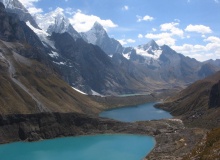

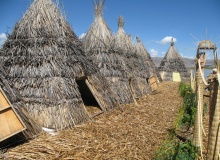
Lima
The City of Kings, Lima, Peru, is a dynamic, vibrant city full of contrasts. Modern skyscrapers stand beside pre-Incan pyramids that cover entire city blocks. Formerly just a stopover en route to the tourist mecca of Cusco and the Incan ruins of Machu Picchu, visitors to Lima are now spending more and more time soaking up the cosmopolitan atmosphere in Peru's capital city, where fine museums and world-class dining combine with thousands of years of history.
Whether you are shopping in designer boutiques and posh malls, partying until dawn in a nightclub facing the Pacific, or sampling seafood in the city's best cevicherias, there is something for everyone in Lima.
WHEN TO TRAVEL to Lima
Lima’s weather is very temperate due to its proximity to the equator. Winters in Lima can be quite grey as a result of the humid climate. Through most of winter Lima is covered in a layer of clouds and a light drizzle, or ‘garúa’ can be frequent; average temperatures are around 15° C. The summer months of December to March tend to be sunny and temperatures average around 22°C, though they can go as high as 27°C. The humidity factor makes these seemingly mild temperatures feel more extreme.
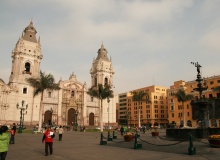
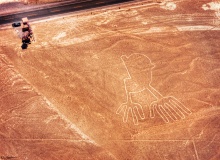
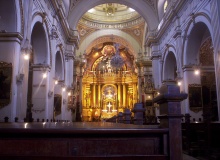
Cusco
Cusco is the ancient capital of the Incas high in the Andes and about 600 km southeast of Lima. As the most-visited city in Peru, Cusco serves as the centre of the tourist trade, with more than a million visitors annually.
Some of the most important sights in Cusco include ancient Inca ruins, such as the Tambomachay ritual bath, the Q'enqo (amphitheatre of sacrifices) and the fortresses of Pucara and Sacsayhuaman (its three ancient central towers—a symbol of the empire—were destroyed by the Spaniards). The sun-worshipping ceremony of Inti Raymi takes place at Sacsayhuaman on 24 June each year.
Cusco is also a popular base for trekking, especially along the famous Inca Trail. This two- to four-day route takes you through dense cloud forest, ancient Inca outposts and the great Urubamba gorge, ending with a dramatic descent into Machu Picchu. The number of hikers on the trail is now limited.
Note: It is imperative that visitors take it easy the first day or two in Cusco. The city's high altitude (3,350 m) can cause altitude sickness, in people who have just arrived from Lima, which is at sea level.
WHEN TO TRAVEL to Cusco
The dry season is from May to September. This is good if going to on jungle treks. The rainy season is from the middle of November to March and can make activities such as jungle treks difficult. Some of these activities can be suspended if the weather gets to bad. This however is extremely rare.
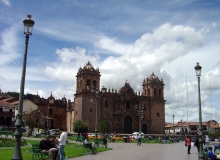
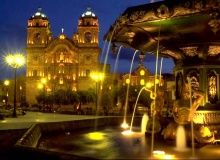
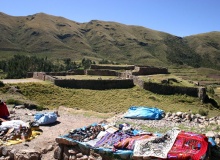
Machu Picchu
Machu Picchu has the most spectacular setting of any ruin in the world. This Lost City of the Incas is a place everyone must see at least once.
Capping the end of the ridge is Huayna Picchu, a soaring peak that offers a challenging climb—and a bird's-eye view of the complex as a reward. Once atop Huayna Picchu, linger for a view of the surrounding misty green-clad mountains and you'll understand why the last Incas chose to hide there.
Machu Picchu's grassy central court is surrounded by almost 200 houses, palaces and temples built from perfectly fitted stone blocks. Stone and earth terraces (designed for farming and defense) descend the mountain around three sides of the city—the fourth side is a sheer cliff.
If you're feeling really fit, you could reach the ruins via the famous Inca Trail, an ancient pathway that passes through cloud forests, gorges and ancient Inca outposts before descending into Machu Picchu. The number of hikers on the Inca Trail is now limited and everyone must be accompanied by a government-certified guide. It takes between two and four days to reach Machu Picchu via the Inca Trail.
WHEN TO TRAVEL to Machu Picchu
June to August are the coldest and the driest months, it is the most popular time to trek and explore the ancient ruins. In February the annual cleanup of the trail takes place. The period between December and April is the wettest, the conditions are mostly slippery and often clouds cover the scenery.
